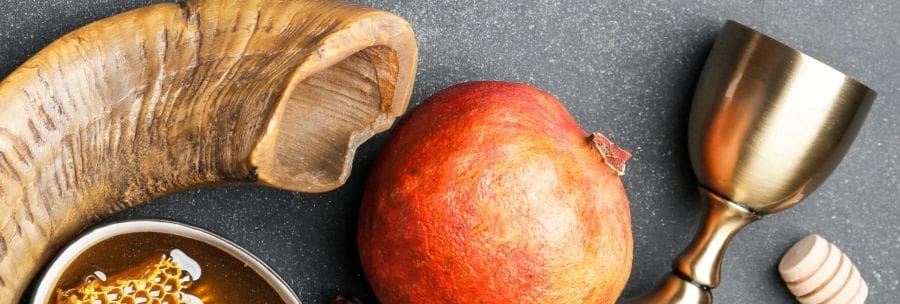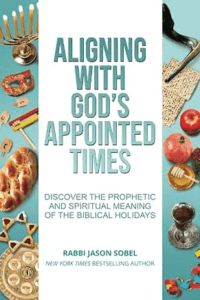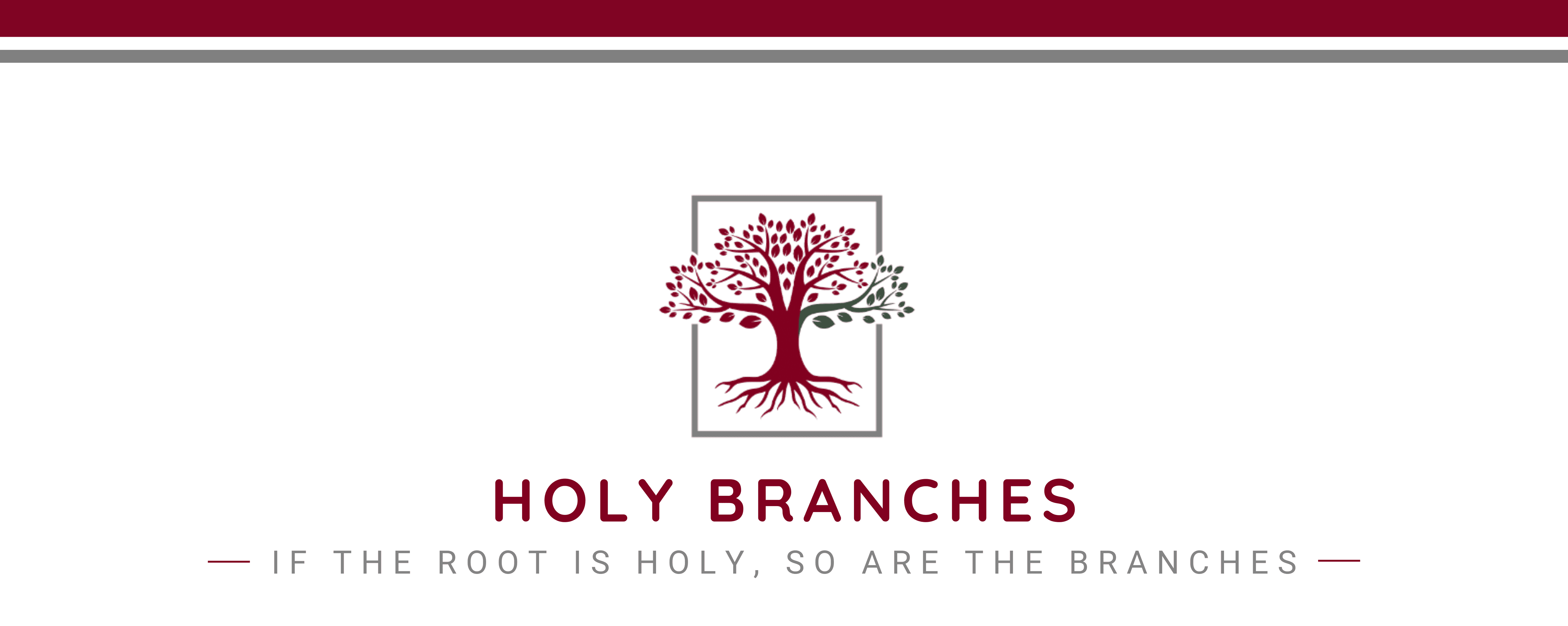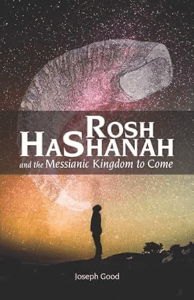
What’s the Difference Between Rosh Hashanah and Yom Teruah?
As Christians who seek to incorporate the Hebrew roots of our faith into our lives, we often have a lot to learn about the Holy Days and how they relate to our faith. Although they occur at the same time of year, there are some significant differences between the Rosh Hashanah and Yom Teruah celebrations.

The Calendar
While Rosh Hashanah is the beginning of a year, the beginning of the cycle of months starts in the month of Aviv (also called Nisan). For example, this year is the year 5780, so this Rosh Hashanah will bring the first of the year 5781.
But the cycle of months, including the Holy Days, starts in the Spring, just 14 days before Passover. That can be unclear since those of us who have followed the Gregorian calendar all our lives are used to a new year and our cycle of months occurring simultaneously, but here’s some background on how that came about.
Perhaps most well-known as the Jewish New Year, the words Rosh Hashanah mean “the head of the year” (rosh = head, ha = the, shanah = year). It’s the first day of the calendar year and is celebrated on the first day of the seventh month of Tishrei.
But in Exodus 12:2, God said that the first month begins fourteen days before Passover, which is in the month of Aviv (Nisan). In the command for the observation of Yom Teruah (also called Rosh Hashanah today) in Leviticus 23:24, it’s to be celebrated on the first day of the seventh month, which makes it not the first month of the year but more than halfway through it. It’s the first month as far as the monthly calendar goes. The Bible doesn’t specifically mention the start of a new year in the command for this or any Holy Day.
The discrepancy is due to Jewish leaders adhering to Babylonian traditions. In developing the Hebrew calendar, Jewish leaders chose Rosh Hashanah as the beginning of the year for counting purposes. The Jerusalem Talmud says that even the names of the months on the Hebrew calendar came from Babylonia (Jerusalem Talmud, Rosh Hashanah 1b, 56d).
A New Year Celebration
Because many celebrate Rosh Hashanah as the beginning of a new year, the focus is on new beginnings and the year ahead. Pomegranates and apples dipped in honey are eaten on Rosh Hashanah to celebrate God’s provision and the sweet new year ahead. Some have a Taslikh ceremony, tossing bread into running water, symbolizing the casting off of sin for the new year.
A Day of Remembrance
Yom Teruah, as it’s called in Numbers 29:1, also known as the Feast of Trumpets, is commanded in Leviticus 23:23-25 and Numbers 29:1-6. The only specifics given in the command for observation of this Holy Day are that we’re to rest, have a holy convocation, make a teruah, and offer sacrifices at the Temple. The Bible also said we’re to be reminded, but it doesn’t specify what we should remember.
Although it’s most commonly translated as “blowing trumpets,” the word teruah is used in the Bible when a loud noise is made. It can be shouting or blowing trumpets (shofars). A teruah was made when God brought down the Wall of Jericho, and one will be the sound we hear when Jesus returns!
Without a Temple, we observe this day by remembering all God has done for us. We also look forward to Jesus coming and blow shofars to remind us of all God has done for His people and rehearse, looking forward to what it will be like when Jesus returns. Some even believe that Yom Teruah will be the day of the year Jesus comes back to earth.
The Ten Days of Repentance
According to Jewish tradition, Rosh Hashanah sets off the ten days between Rosh Hashanah and Yom Kippur, known as the High Holy Days or the Ten Days of Repentance. It’s believed that during these ten days, God takes account of each person’s actions and decides whose name is written in the Book of Life. Jewish people take this time to repent of their sins and do good deeds, hoping they’ll be added to the Book and spared from destruction.
As Christians, we believe that our faith in Jesus as the atoning sacrifice for our sin is what allows us to have our names written in the Book of Life; however, we can also use these ten days to reflect on our lives, repent of the many things each of us has done that is against the commands of our God, and re-align our lives with what He wants of us.
Both Rosh Hashanah, the start of a new year, and Yom Teruah, the day to remember and blow trumpets, have themes that can help Christians refocus and remember God’s blessings and provision and the return of our Savior. What a beautiful way to start fresh and look forward to the fulfillment of prophecy in our Bible! L’Shana Tova!
If you’re planning a celebration for Rosh Hashanah and/or Yom Teruah this year, check out 10 Rosh Hashanah/Yom Teruah Traditions for Christians for some ideas!
Comments (6)
Leave a Reply Cancel reply
Search
Recent Comments
- Patricia Boone on How to Find a Hebraic Congregation
- Holy Branches on The Hebrew Calendar Explained
- lachumba on The Hebrew Calendar Explained
- Richard Close on Is the Sabbath Really THAT Important to God?
- Yah Behna Behna Yisrael (Govt name) WARREN PARKS on How to Find a Hebraic Congregation





can you please send me Hebrew documented facts that Yom Teruah is called a feast. My formers Pastor said it is not called a feast, but it is also called the feast of Trumpets in the Bible. i sincerely appreciate your response!
The Hebrew text does not literally say “Feast of Trumpets” so your pastor would be correct to say the Bible doesn’t say it’s a feast. The word “feast” is an English translation of the word “moedim”, which can be translated as “appointed times”. Saying they’re “Feasts” is just an English term for “celebrations”, “observations” or “appointed times”. It’s common to call them Feasts and many who observe them refer to them as such. And, yes, Yom Teruah is one of these!
Yom Teruah is in Lev. 23:23-25 (with it listed as one of the moedim in verses 2, 37 & 44 of Lev. 23). It’s also in Num. 29:1.
Thank you so much for your explanation. Reading Exodus I kept wondering why the “Jewish New Year” was celebrated in September when God had declared that Passover was to be celebrated in the 1st month. I’m a lover of Jesus, my Savior and not from a Jewish heritage. It’s rich to begin to understand what God was teaching us about Him through the feast days. Again, thank you so very much.
Hello, Jean!
I agree it can be confusing. That’s one reason I wanted to write this post. I also agree that learning what God was teaching through the Feast Days is so rich and can really help us to grow spiritually! Thank you for visiting my site! Shalom!
You have some very wise thoughts here. However, as a Follower of Yeshua, and studied awhile, May I make a suggestion? Please stick to what is WRITTEN in Scripture? In Torah, we have been Commanded to NEITHER Add to nor Take Away From. Judaism has ADDED Rosh Hoshanna to their calendar, celebrating a new year! The New Year starts when the Barley is ripe in Isreal, around the Feast of Passover. Have you ever listened to Arthur Bailey? I KNOW he Sticks to What is Written. House of Isreal. Thank you! Great way to start the Feast Day of Atonement.
All of Torah was written for ALL Followers of Yeshua! There was NEVER to be this division among believers! One Set of Instructions. Yeshua/Christ Himself said, “For truly I tell you, until heaven and earth disappear, not the smallest letter, not the least stroke of the pen, will by any means disappear from the LAW until EVERYTHING is accomplished”. Matt. 5:18. As He has not yet returned, all has not yet been fulfilled!
It all BEGINS eith Excepting Yeshua as. Our MESSIAH, yes. However, did HE not also say, “Pick up your cross and FOLLOW ME?” HE Observed ALL the Feast Days, ALL THE TORAH Commands! Should we not also do as He has done? I am not perfect by any means. This is why we have this Feast Day we celebrate today! Thank you so much for what you have written! I have NO IDEA why when I turned on my cellphone this AM, it was on your website! I credit YeHoVah GOD! HE alone, can do Anything. Have a Great Celebration. GRATITUDE for sure!